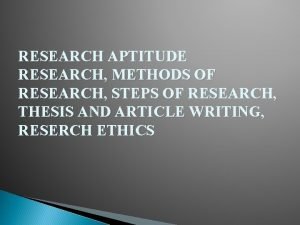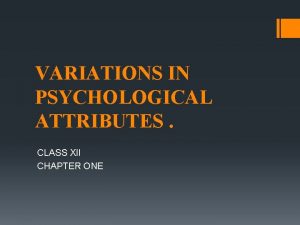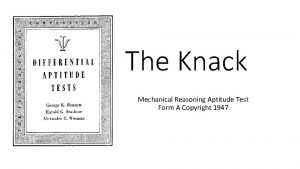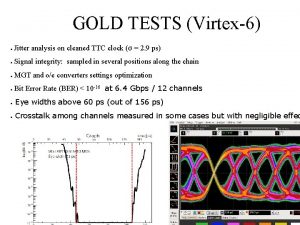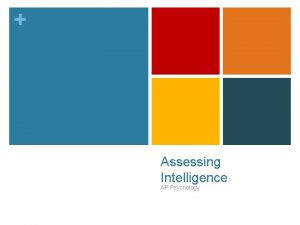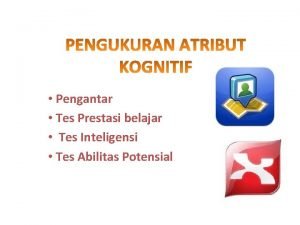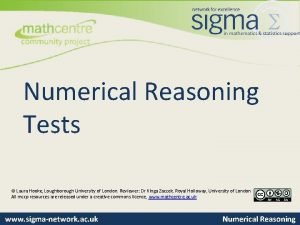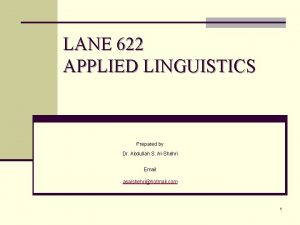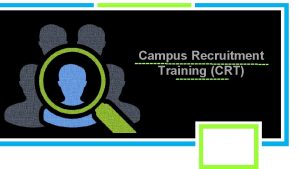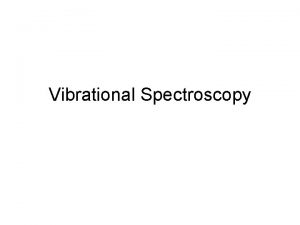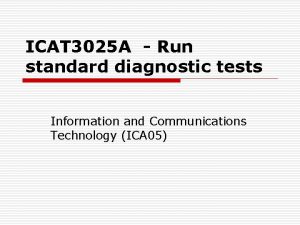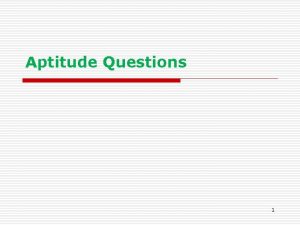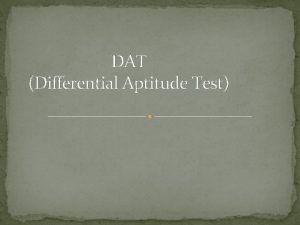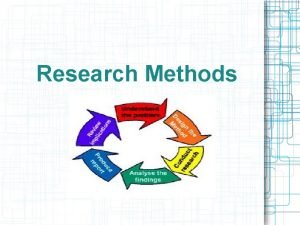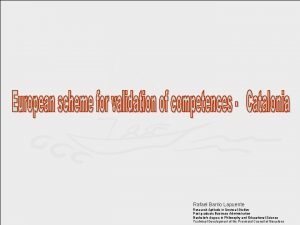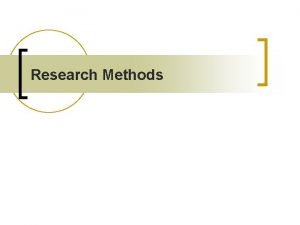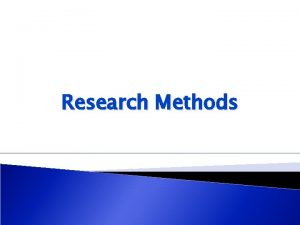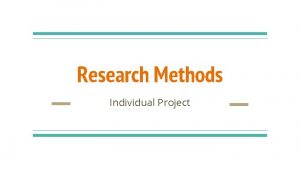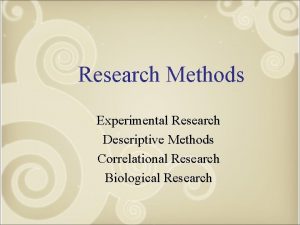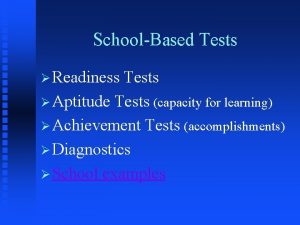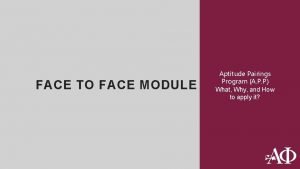RESEARCH APTITUDE RESEARCH METHODS OF RESEARCH STEPS OF
























- Slides: 24

RESEARCH APTITUDE RESEARCH, METHODS OF RESEARCH, STEPS OF RESEARCH, THESIS AND ARTICLE WRITING, RESERCH ETHICS

RESEARCH: Before entering into the main topic, we want to highlight a thing that differs human beings from others. 1. Man is more readily motivated toward a specific task and responds to a wider range of incentives. 2. Man is a better observer. 3. In general, man has better control over his emotions. 4. Man is able to work with symbols - language, numbers, spatial diagrams and the like.

MEANING: Now we will enter into our own topic that is “Research”. If we split this word, we will get v Re’ and ‘Search’ – means ‘to search again or anew’. Synonymous of research are In. quir. y, Examination, Interrogation, Investigation, Query, Question, Scrutiny, and Study. v In a very rudimentary sense, we can say that research is nothing but a search for knowledge. It is a scientific and systematic study of a particular topic of nature. In fact, it is an art of scientific investigation. It is a very common inquisitiveness of human mind that it wants to unfold the mystery of nature. v This curiosity or inquisitiveness is the mother of all invention or discovery. v Webster’s Comprehensive Dictionary lays down the meaning of research as “A systematic investigation of some phenomenon or series of phenomena by the experimental method. ” v Advanced Learner’s Dictionary of Current English lays down the meaning of research as “a careful investigation or inquiry especially through search for new facts in any branch of knowledge. ” v Redman and Mory define research as a “systematized effort to gain new knowledge. ” v Some people consider research as a movement; a movement form the known to the unknown. It is actually a voyage of discovery. v In short, the search for knowledge through objective and systematic method of finding solution to a problem is research.

CHARACTERISTICS: Research is such an intricate process that consists of some certain characteristics: it must, as far as possible, be controlled, rigorous, systematic, valid and verifiable, empirical and critical. 1. Controlled. Research should be done in such a way as the external factors do not impede the main essence of the research. 2. Rigorous – In a research work the procedure will be very much relevant, appropriate and justified and it always upholds a rigorous standards. 3. Systematic – There will be a logical sequence in the investigation and it always will be very much objective. 4. Valid and Verifiable. The conclusion that is our findings is correct and it can be verified by others. 5. Empirical. Any conclusion that is drawn is based upon bare evidence that is collected from real life experiences or observations. 6. Critical. The process of investigation must be critical and free from any kind of confusion. 7. Purposive. Research is highly purposive. It deals with a significant problem which demands a solution. 8. Research requires patience. 9. Research requires courage. 10. Research is carefully recorded and reported.

TYPES: The basic types of research are as follows: 1. Descriptive vs. Analytical: The major purpose of descriptive research is description of the state of affairs as it exists at present. The Researcher has no control over the variables: he can only report what has happened or what is happening. We often use Ex post facto research for descriptive research studies. Ex post facto studies also include attempts by researchers to discover causes even when they cannot control the variables. The methods of research utilized in descriptive research are survey methods of all kinds. Analytical research, on the other hand, the researcher has to use facts or information already available, and analyse these to make a critical evaluation of the material.

2. Applied vs. Fundamental: From the point of view of application, there are two broad categories of research: Applied (or action) research or fundamental (or basic or pure) research. Applied research aims at finding a solution for an immediate problem facing a society or an industrial/business organisation. Fundamental (Pure) research is mainly concerned with generalisations and with the formulation of a theory. “Gathering knowledge for knowledge’s sake is termed ‘pure’ or basic research. Research concerning some natural phenomenon or relating to pure mathematics are examples of fundamental research. Similarly, research studies, concerning human behaviours carried on with a view to make generalisations about human behaviour, are also examples of fundamental research, but research aimed at certain conclusions (say, a solution) facing a concrete social or business problem is an example of applied research. Thus, the central aim of applied research is to discover a solution from some pressing practical problem, whereas basic (Pure) research is directed towards finding information that has a broad base of application.

3. Quantitative vs. Qualitative: Quantitative research is based on the measurement of quantity or amount. It is applicable to phenomena that can be expressed in terms of quantity. In this quantitative research, tests, questionnaires, check lists, scales of various types, etc. will be employed for data collection. The law behind this research is “If anything exists, it exists in some quantity; if it exists in some quantity, it is measurable. In this research the findings are stated in terms of statistical indices with definite meanings (like correlations, variance, etc. ) and also using diagrams, graphs and tables. Qualitative research, on the other hand, is concerned with qualitative phenomenon, i. e. , phenomena relating to or involving quality or kind. For instance, when we are interested in investigating the reasons for human behaviour (i. e. , why people think or do certain things), that is known as ‘Motivation Research’, an important type of qualitative research. This type of research aims at discovering the underlying motives and desires, using in-depth study of the concerned matter. Other techniques of such research are word association tests, sentence completion tests, story completion tests and similar other projective techniques. It is especially important in the behavioural sciences.

4. Conceptual vs. Empirical: Conceptual research is that related to some abstract idea(s) or theory. It is generally used by philosophers and thinkers to develop new concepts or to reinterpret existing ones. On the other hand, empirical research relies on experience or observation alone, often without due regard for system and theory. It is data based research, coming up with conclusions which are capable of being verified by observation or experiment. 5. Some Other Types of Research: All other types of research are variations of one or more of the above stated approaches, based on either the purpose of research, or the time required to accomplish research, or the environment in which research is done, or on the basis of some other similar factor. From the point of view of time, we can think of research either as One –Time Research or Longitudinal Research. In the former case the research is confined to a single time-period, whereas in the latter case the research is carried on over several time periods. In longitudinal studies incorporates child study researches and case studies. In social sciences, especially in psychology, longitudinal study has special relevance. This approach requires long time for completion. Historical research is that which utilizes historical sources like documents, remains, etc. to study events or ideas of the past, including the philosophy of persons and groups at any remote point of time.

METHODS OF RESEARCH: Research methods may be understood as all those methods/techniques that are used for conduction of research. Research methods or techniques thus refer to the methods the researchers use in performing research operations. In other words, all those methods which are used by the researcher during the course of studying his research problem are termed as research methods. Since the object of research, particularly the applied research, is to arrive at a solution for a given problem, the available data and the unknown aspects of the problem have to be related to each other to make a solution possible. Keeping these points in our mind, we can put the research methods into the following three groups: a. First Group- We include those methods which are concerned with the collection of data. b. Second Group – Statistical techniques which are used for establishing relationships between the data and the unknown. c. Third Group – These methods are used to evaluate the accuracy of the results obtained. On the other hand, Research methodology is a way to systematically solve the research problem. It may be understood as a science of studying how research is done scientifically. In it we study the various steps that are generally adopted by a researcher in studying his research problem along with the logic behind them. Research methodology has many dimensions on the other hand research methods do constitute a part of the research methodology. The scope of research methodology is wider than that of research methods, because when we talk of research methodology we not only talk of the research methods but also consider the logic behind the methods.

George J. Monly has classified research methods into three basic types: Survey, historical and experimental methods. Research method is divided into two categories – Special and General. Special category is divided into two categories – Qualitative and Quantitative methods. Qualitative methods have five sub-divisions – social survey, Statistical, Historical, Comparative, and Structural Functional Survey. Quantitative methods have five sub-divisions – Inductive and Deductive, Case study, Sociometry, Social distance Scale, Community Study.

EXPERIMENTAL METHOD: General Characteristics: 1. Bias free estimation of true effect. 2. Precision of the estimates with a quantitative index. 3. The testing of clear specific hypothesis of different intention etc. 4. Efficiency in the sense of securing maximum results at minimum. Specific Characteristics: 1. It emphasises objectivity and accuracy in the collection of the data. 2. It emphasises control of conditions. 3. It sets out the relationship between the phenomenon and this relationship is more or less of the causal type. 4. It uses standardized tool for experimentation. 5. The sample is selected with great precaution. 6. It leads to the testing of a specific hypothesis and experimental evidences. 7. It allows for precision and exactness in the findings and their analysis and treatment.

HISTORICAL METHOD: This method is concerned with the past and with attempts to trace the past as means for seeing the present prospective. This method can be classified into three types: Historical, Legal and Documentary. Historians, philosophers, social-psychiatrists, literally as well as social scientist, use the historical approach as an aid in visualizing society as a dynamic organism and its structures, and functions as steadily growing and undergoing change and transformation. Social scientists in particular are interested or concerned with social change. In this context we will quote G. B. Shaw –“The past is not behind the group, it is within the group. The past if it can be located, contains the key to the present. Through today and yesterday will probably influence tomorrow. ”

STEPS OF RESEARCH: The following order concerning various steps provides a useful procedural guideline regarding the research process: 1. Formulating the research problem 2. Extensive literature survey 3. Developing the hypothesis 4. Preparing the research design 5. Determining sample design 6. Collecting the data 7. Execution of the Project 8. Analysis of Data 9. Hypothesis Testing 10. Generalisations and Interpretation 11. Preparation of the report or presentation of the results i. e. final write-up

THESIS AND ARTICLE WRITING: An article is a piece of writing written for a large audience. The main motive behind writing an article is that it should be published in either newspapers or magazines or journals as to make some difference to the world. It may be the topics of interest of the writer or it may be related to some current issues. The topic can either be serious or not so serious, same goes for its tone and language.

Objectives: i. It brings out the topics or the matter of interest in the limelight. ii. The article provides information on the topics. iii. It offers suggestions and pieces of advice. iv. It influences the readers and urges them to think. v. The article discusses various topics, persons, locations, rising-issues, and technical developments.

The Format of Article Writing An article must be organised in a proper way so as to draw the attention of the readers. The basic outline for an article writing format is – i. Heading/Title ii. A line having the writer’s name iii. Body (The main part of the article 2 -3 paragraphs) iv. Conclusion (Ending paragraph of the article with the opinion or recommendation, anticipation or an appeal)

Steps for Article writing Format: Think of the topic you want to write the article about. Only after you have decided your topic you can go ahead and undertake the further steps in the process one by one. Target Audience – Identify the concerning reading group. Purpose – Find the objective or aim of writing article. Collect and Select – Gather as much information as possible and also identify the details that are most significant. Organise – Arrange the information and the facts in a logical way. If you have followed all the above steps then you can start the final step that is writing. While writing an article, always use proper grammar, spelling, and proper punctuations. Use vocabulary skill. Keep the introduction of the topic catching, interesting, and short. Discuss the opinion and the matter in an organized and descriptive manner.

COMMON MISTAKES IN ARTICLE WRITING Some of the common mistakes are – The language should not be too formal. The article must be in easy language for better understanding. The title of the article must be catchy and clearly understandable. Expressing personal views is fine but the author must never talk about himself/herself.

FIVE THINGS YOU NEED TO KNOW ABOUT WRITING ARTICLES: 1. The reader is identified – An article is like a direct conversation with the reader. Everything you write must speak to that reader and engage their interest right from the first sentence. 2. It has to get attention: 3. It has to be interesting: 4. It has to be easy to read: 5. Write a good ending: In an essay you sum up the points that have gone before and draw a conclusion from that. But in an article, it’s better to give the reader something to think about, perhaps by asking them another question or giving them a call to action.

THESIS WRITING: A common pattern is usually prescribed in preparing thesis paper. 1. Introduction and the statement of the problem This section should state the need and relevance of the problem. The objectives of the study and the hypotheses should be listed clearly and distinctly. 2. Review of related literature / Studies It helps to clarify the history of the problem and the major research endeavours undertaken in the area that is a very vital part of a dissertation. 3. The methods adopted by the study This section describes the procedures adopted for conduction the study. This includes the details of the study. The researcher is expected to spell out the details of the steps adopted for administering the tool, precautions adopted for collecting the data and statistical techniques employed for the analysis of data, etc.

4. Analysis and interpretation of data In this section the researcher provides details of how the data collected. 5. The results This section consists of the straight forward presentation of the findings based on the analysis. 6. Discussion Each hypothesis is to be tested based on the findings and has to be either accepted or rejected. In this section the practical and social relevance of the findings are discussed. 7. Reference In this section a list of all the works that are used in preparing the research are highlighted by following any international accepted conventions. For social sciences “The Harvard Method” – Author or authors (The surname is followed by first initials) Year Title (In Italics) Publisher Date Viewed Web address <in angled brackets> Another popular format is called ‘the serial method’. In this the citations are indicated numerically in the body of the text.

RESEARCH ETHICS: Human beings are generally very intricate and this subtle nature is generally the subject matter of social sciences. So, one has to follow some norms or values in conducting social science research. Ethical issues relating to participants First: Right to Privacy when collecting information Second: Seeking consent when dealing about something Third: Devoid of Intentional Harm to other Fourth: Providing incentives because participants are giving their valuable time.

Relating to the Researcher – 1. Any kind of pre-conceived notion or biasness 2. Confidentiality 3. Informed consent 4. Lack of deprivation 5. Avoid inappropriate research methodology 6. Inappropriate delivery of the information

 Aptitude research
Aptitude research Direct and indirect wax pattern
Direct and indirect wax pattern Variations in psychological attributes
Variations in psychological attributes Mechanical reasoning practice test
Mechanical reasoning practice test Achievement vs aptitude tests ap psychology
Achievement vs aptitude tests ap psychology Ttc electrical aptitude test
Ttc electrical aptitude test Master aptitude emotional intelligence
Master aptitude emotional intelligence Divisibility aptitude tricks
Divisibility aptitude tricks Alfred binet ap psychology definition
Alfred binet ap psychology definition Ukcat calculator shortcuts
Ukcat calculator shortcuts Apa itu abilitas
Apa itu abilitas Bakat menurut flanagan
Bakat menurut flanagan Lex naturalis kahulugan tagalog
Lex naturalis kahulugan tagalog University clinical aptitude test
University clinical aptitude test Ascoulor
Ascoulor Armed services vocational aptitude battery definition
Armed services vocational aptitude battery definition Test organicity
Test organicity Shl numerical reasoning test
Shl numerical reasoning test Aptitude intelligence and systematic forgetting
Aptitude intelligence and systematic forgetting Crt topics
Crt topics Selection rule for simple harmonic oscillator
Selection rule for simple harmonic oscillator Multiple aptitude test
Multiple aptitude test Salesperson aptitude
Salesperson aptitude Icat aptitude test
Icat aptitude test Ptt aptitude test
Ptt aptitude test
